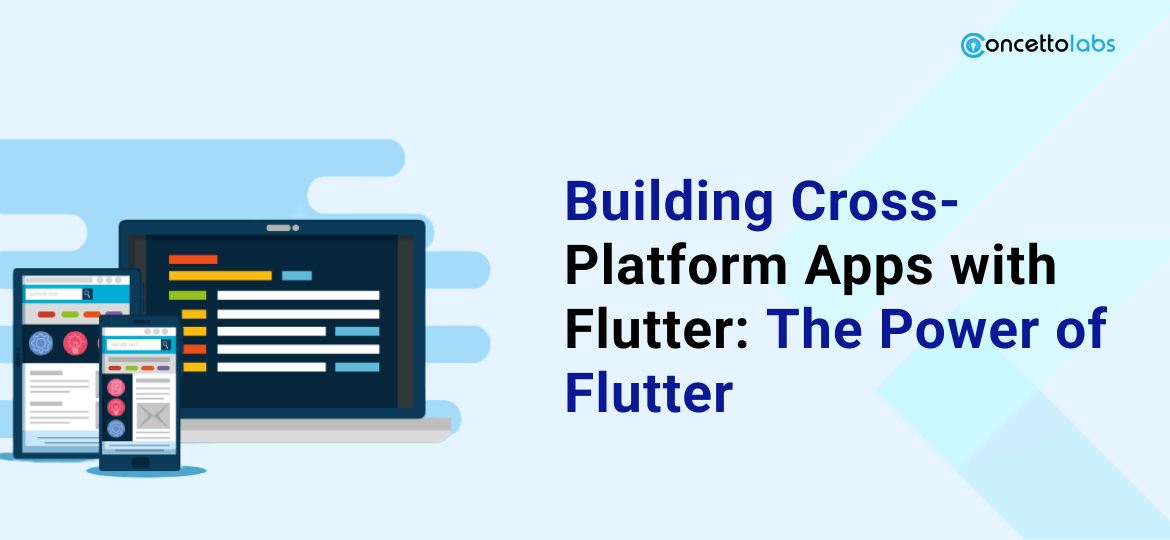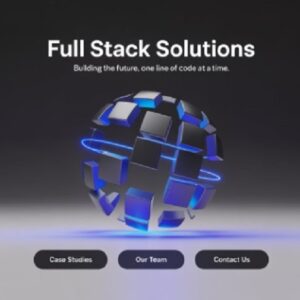
In today’s fast-paced digital world, businesses and organizations need to have a strong presence across multiple platforms to reach a wider audience. This requires a comprehensive cross-platform app development solution, and Flutter is one of the most popular frameworks for building cross-platform apps.
What is Flutter?
Flutter is a free and open-source framework developed by Google. It enables developers to create high-quality, native-looking apps for iOS, Android, and other platforms using a single codebase. The framework is known for its fast development process, customizable widgets, and clean and simple architecture, making it a popular choice among developers.

Why choose Flutter for Cross-Platform Development?
- Single Codebase: With Flutter, developers can write one codebase that works across multiple platforms, reducing the time and resources required to develop separate apps for each platform.
- Fast Development: Flutter has a hot reload feature that allows developers to quickly see the changes they make in real-time, speeding up the development process. This means that developers can make changes to their code and see the results immediately, making the development process faster and more efficient.
- Customizable Widgets: Flutter comes with a large collection of customizable widgets that are optimized for different platforms, allowing developers to create a unique and visually appealing user interface for their app.
- Easy to Learn: Flutter has a clean and simple architecture, making it easy for developers to learn and adopt, even if they are new to app development. The framework also comes with extensive documentation and a large community of developers, making it easy to get help and support.
- High Performance: Flutter uses a unique architecture that allows for fast, smooth, and responsive app performance. The framework uses a reactive programming model that enables developers to create apps that are fast, efficient, and responsive to user interactions.
- Multiplatform Support: Flutter allows developers to create apps for a wide range of platforms, including iOS, Android, desktop, web, and more.
- Open Source: Flutter is an open-source framework, allowing developers to access the source code and make modifications as needed, making it a highly customizable solution.
- Native-Like Performance: Flutter allows developers to create apps with native-like performance, ensuring that the apps run smoothly and efficiently, even on lower-end devices.
- Large Community: Flutter has a large and growing community of developers who share their knowledge and expertise, making it easy for developers to find solutions to problems and stay up-to-date on the latest developments in the framework.
- Growing Ecosystem: With the growing popularity of Flutter, there is an increasing number of third-party plugins, libraries, and tools available, making it easier for developers to create high-quality apps with advanced features and functionality.
Despite these benefits, building cross-platform apps with Flutter does come with some challenges. Here are a few:
While Flutter offers many advantages for cross-platform app development, it is important to acknowledge that there are also some challenges that come with using the framework. These challenges include:
- Limited Library Support: Despite a growing number of libraries and plugins available for Flutter, it is still a relatively new framework, and some libraries and plugins may not yet be available for certain use cases. This means that developers may need to write custom code to implement certain features or functionalities, which can increase development time and effort.
- Complex Architecture: The architecture of Flutter is complex and may take some time for developers to fully understand and become proficient in. This means that developers need to invest time and effort into learning the framework, especially if they are new to app development.
- Steep Learning Curve: Although Flutter is easy to learn compared to other cross-platform app development frameworks, it still requires a steep learning curve. This means that developers need to spend time familiarizing themselves with the framework and its features before they can start developing apps.
- Integration with Existing Systems: Integrating Flutter apps with existing systems, such as back-end servers or databases, can be challenging. This may require developers to write custom code to handle data transfer between the app and the back-end systems, increasing development time and effort.
- Performance on Older Devices: While Flutter allows for native-like performance, it may still struggle to run smoothly on older devices with lower specifications. This means that developers need to test their apps thoroughly on a range of devices to ensure that they run smoothly and efficiently.
- Testing and Debugging: Testing and debugging Flutter apps can be challenging, especially for complex apps with many different features and functionalities. This means that developers need to invest time into testing and debugging their apps to ensure that they work as expected and meet the needs of their users.
- Larger App Size: The size of Flutter apps can be larger compared to apps developed using other frameworks. This means that users need to have more storage space on their device to download and install the app, which may impact the user experience.
- Limited Support for Existing Apps: Flutter does not currently support existing apps, meaning that developers need to create new apps from scratch if they want to use the framework. This may not be practical for developers who have already invested time and resources into existing apps.
- Limited Access to Native Features: While Flutter allows developers to create apps with native-like performance, it may not provide access to all of the native features of a platform. This means that developers may need to write custom code or use plugins to access certain features, which can increase development time and effort.
- Security Concerns: With the rise of cyber threats, security is a major concern for app developers. While Flutter provides some security features, it is important to acknowledge that there may still be security vulnerabilities in the framework, and developers need to take steps to ensure that their apps are secure.
Conclusion:
Flutter is a powerful framework for building cross-platform apps, offering several benefits including fast development, a single codebase, customizable widgets, easy learning, high performance, and multiplatform support. Whether you’re a seasoned app developer or just starting out, Flutter is an excellent choice for building high-quality, native-looking apps that are optimized for multiple platforms.
With the rise of Flutter app development services, businesses and organizations can take advantage of the framework’s benefits and bring their ideas to life. Whether you’re looking to build an app for your business, create a mobile app for your organization, or develop a new product, Flutter can help you achieve your goals.
So if you’re ready to unlock the potential of Flutter app development, it’s time to start exploring the framework and see how it can help you bring your ideas to life. With its fast development process, customizable widgets, and multi-platform support, Flutter is the ideal choice for businesses and organizations looking to build high-quality, native-looking apps that reach a wider audience.
Author Profile
- I am the owner of the blog readree.com. My love for technology began at a young age, and I have been exploring every nook and cranny of it for the past eight years. In that time, I have learned an immense amount about the internet world, technology, Smartphones, Computers, Funny Tricks, and how to use the internet to solve common problems faced by people in their day-to-day lives. Through this blog, I aim to share all that I have learned with my readers so that they can benefit from it too. Connect with me : Sabinbaniya2002@gmail.com
Latest entries
 Artificial IntelligenceJuly 11, 2025Why AgentForce Is the Right Choice for Generative AI Development
Artificial IntelligenceJuly 11, 2025Why AgentForce Is the Right Choice for Generative AI Development Artificial IntelligenceJuly 10, 2025The Role of AI in Shaping Full-Stack Product Development in 2025
Artificial IntelligenceJuly 10, 2025The Role of AI in Shaping Full-Stack Product Development in 2025 How ToJuly 8, 2025How a Virtual Number in Switzerland Can Transform Your Communication Experience
How ToJuly 8, 2025How a Virtual Number in Switzerland Can Transform Your Communication Experience ArticleJuly 7, 2025What Makes a Great Sales Enablement Tool in 2025? 5 Must-Have Features to Look For
ArticleJuly 7, 2025What Makes a Great Sales Enablement Tool in 2025? 5 Must-Have Features to Look For